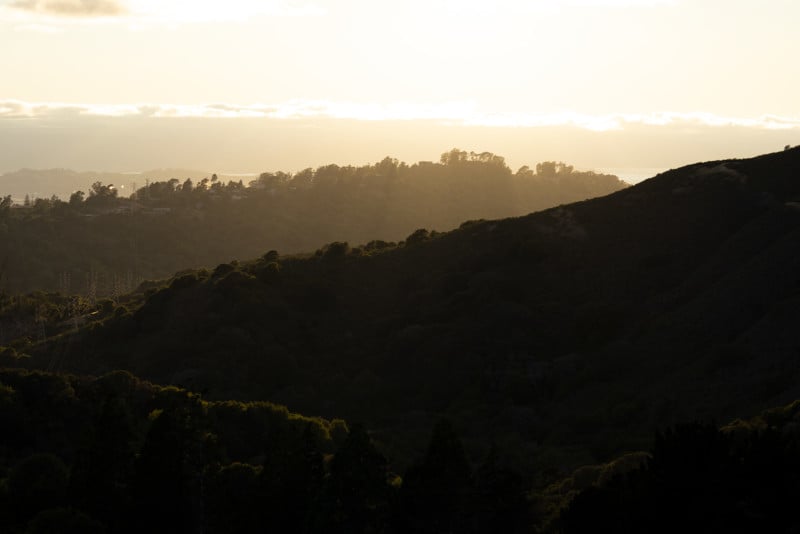Canon EOS R10 Review: Powerful Performance at an Affordable Price
![]()
The Canon EOS R10 is tiny but mighty, sporting an advanced autofocus system, the ability to shoot 15 frames per second with its mechanical shutter, and a full-body APS-C experience.
Canon released both the EOS R10 and EOS R7 at the same time in May. The EOS R7 rightly had expectations to meet as it’s the higher-end model, and people have really enjoyed the 80D, 90D, and 7D series cameras it basically replaces. The other camera, the EOS R10, replaces the lower-end Rebel DSLRs, and while it’s always great to see incremental improvements in this realm, I don’t think anyone expected Canon to go in this hard.
Build Quality
The Canon EOS R10 takes on a compact form factor while still clearly is meant to be comfortable in the hand. It is 4.82 inches wide (122.5 millimeters) by 3.46 inches tall (87.8 millimeters) and 3.28 inches in depth at the grip (83.4 millimeters). Having a good grip makes a big difference as it greatly influences the tactile experience of using a camera, and considering the overall size here, Canon did a wonderful job.
The shape and depth are great, but for my hands, I wish it were a little bit taller and that there was more space between grip and lens for clearance. One accessory that would solve both issues is a grip extension like the one for the EOS RP. This would add the height needed, and I’d be able to better angle my fingers so that a larger physical gap would not be necessary.
![]()
![]()
With the battery and memory card in the camera, the EOS R10 weighs about 15 ounces (429 grams). It’s very light in the hands, which can sometimes lead to the feeling of cheap quality. However, I have to go back to the feel of the grip plus the textured rubber material used throughout the body that makes it not feel low grade. Someone at Canon certainly understands user experience priorities when there are only limited things that are achievable at the $980 price.
The layout features a nice slanted shutter button typical of Canon cameras, a front and rear dial for controlling a couple of different methods of exposure, multi-controller joystick control for moving focus points quickly, and a user-programmable four-way D-pad. There’s a dedicated AF/MF switch on the front with another programmable button.
![]()
Both the LP-E17 battery and single UHS-II SD memory card slot are housed through a door at the bottom of the camera. Unlike every other EOS R-series camera, the battery door feels relatively cheap and doesn’t have a spring hinge that keeps the door open when unlocked and instead just flaps around. There is no attempt made whatsoever to weatherproof this entry either, so I needed to be careful about where I set the camera down.
One thing missing from this design is a third wheel for completing all three aspects of direct exposure control: shutter speed, aperture, and ISO. Instead of a third dial, we do get a D-pad that offers more customization options, so at least there is a somewhat of a trade-off.
I say somewhat because button customization with any Canon camera is frustrating with artificially limited options, but it’s even worse with the EOS R10. For example, one of the most essential button customizations is what Canon cameras refer to as “register/recall shooting function.” This is where I can hold a button, and several camera settings of my choice instantly switch to something else I pre-programmed.
Using a slow shutter speed for a still subject, but suddenly there’s fast action? This custom button will nab that fleeting moment by switching to a fast shutter speed and perhaps auto ISO rather than full manual. You’ll find it on the $500 more expensive EOS R7, but not here. It’s not like the potential buyers of this camera would even learn that difference through any of Canon’s marketing, so what in the world is the point in arbitrarily punishing owners with greater limitations on customizations?
![]()
![]()
Image Quality
The Canon EOS R10 uses a newly-developed 24.2-megapixel APS-C sensor and the DIGIC X image processor. There is no in-body image stabilization in this model, so extra stabilization would need to come from the lens used (Canon will put “IS” in the lens name for easy reference).
Through using the R10 over a longer period of time, I find that ISO sensitivity is nearly the only thing that really needs to be kept in check. It reminds me of when I owned the 7D Mark II, and anything over ISO 800 was going to fall apart. Depending on what the subject is and if fine details are critical, the image quality begins to deteriorate fast when the ISO is increased. There are many things to enjoy about this camera, but shooting when the light is soft is not its strength.
![]()
![]()
The dynamic range of the sensor is quite good at preserving data in the shadows but didn’t seem to be as good at bringing back highlights. While the example below is very heavy-handed, it does show a lot of texture being brought out of the very dark areas. Some of the highlights weren’t fully recoverable, but it didn’t make a blocky mess either.


This camera can do 15 frames per second using the mechanical shutter, which far exceeds what others have done in this price range. Every bit helps with subjects like small birds that are twitching around and constantly on the move, and I appreciate what Canon has done here. The camera can also do 23 frames per second with the electronic shutter, but because this is not a stacked sensor, there is a pronounced rolling shutter effect with fast-moving action.

Autofocus
The autofocus of the EOS R10 is one of the things I enjoyed the most. It has Canon’s Dual Pixel CMOS II AF system with 651 phase-detection points. Canon claims that it has inherited its smarts from the $6,000 EOS R3 but not necessarily the speed as it does not have a backside-illuminated stacked sensor. It features astoundingly intelligent subject recognition for humans, animals (including birds), and vehicles and can start tracking from anywhere in the frame.
![]()
I found the reliability of acquisition punching well above its class. There have been a number of times when I see a bird or a dog obscured behind something else, and I don’t anticipate the camera having clear enough identification of the subject, yet it still manages to figure it out and place a focus tracking box around the eye. On the flip side, trying so hard to find subjects in the frame can bring out false positives once in a while. For this, I can temporarily disable the subject tracking, manually choose a tracking point either with the multi-controller or by tapping on the screen, and follow a subject that way.
The autofocus settings are robust for an enthusiast camera. There are six pages of menu settings just for autofocus, including ways to modify its behavior in all sorts of different scenarios. There are even three customizable focus area options where I can decide exactly how wide and tall the zone should be.
![]()
Battery Life
The LP-E17 battery is a smaller size and is used in the Canon Rebel series and EOS RP. I usually get a couple of sessions worth of photography from one battery at a few hours per session. That’s better than I was expecting based on its size and the performance I get out of this mirrorless camera. For video, it was tested to record around 50 minutes of 4K 30p footage before depleting.
One thing that I find confusing is how the camera reports battery life. There are three bars of battery life for a full charge, but once I drain past the second bar, the camera will show a blinking red battery icon with one bar remaining. So that’s essentially only two steps of battery life reported before the third step, which reveals it’s very close to dead. Nowhere on the camera, not even in the battery information menu, can we see what percent battery is remaining for a little more clarity.
![]()
![]()
Come for the Price, Stay for the Speed
The Canon EOS R10 is a camera that bargains. Sometimes it sways heavily in favor of its user, but sometimes it sways in favor of saving on production costs to keep the price low. As a wildlife photographer, my personal favorite aspects of this camera are its intelligent autofocusing system which performs better than some cameras that cost thousands more, and the 15 frames per second continuous shooting with no drawbacks. That being said, there are so many other aspects about the camera that it does just as good or better than we typically see around $1,000 that I would essentially need to just recite the specs sheet to show all there is to like.
On the flip side, there’s no in-body image stabilization, the handling is a little bit cramped, the electronic shutter may be better off ignored for action, and there are some hiccups in the usability like limited custom button options and the lack of a third dial for direct control over the exposure triangle. But a lot of the downsides don’t have as much impact when I consider all the aforementioned positives that come for $980.
![]()
Are There Alternatives?
Alongside the EOS R10, Canon also released the EOS R7, which is another APS-C camera that costs $500 more. That camera has a slightly different body design that’s a little larger and takes a bigger battery. It also has two UHS-II SD card slots instead of one, features in-body image stabilization, a faster maximum shutter speed, improved low-light autofocus, a higher resolution viewfinder and rear LCD screen, better video options, and a fair bit of weather sealing. The R10 is a perfectly fine camera, but with the R7, it will be a longer length of time before you will run into walls of limitations.
Should You Buy It?
Yes. The Canon EOS R10 greatly elevates the standard for APS-C cameras in this price range.